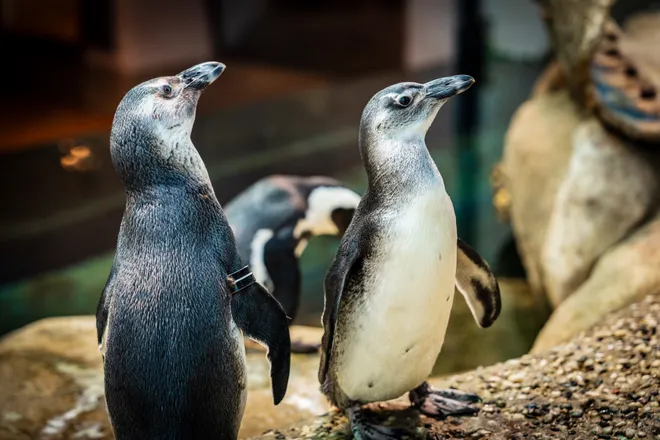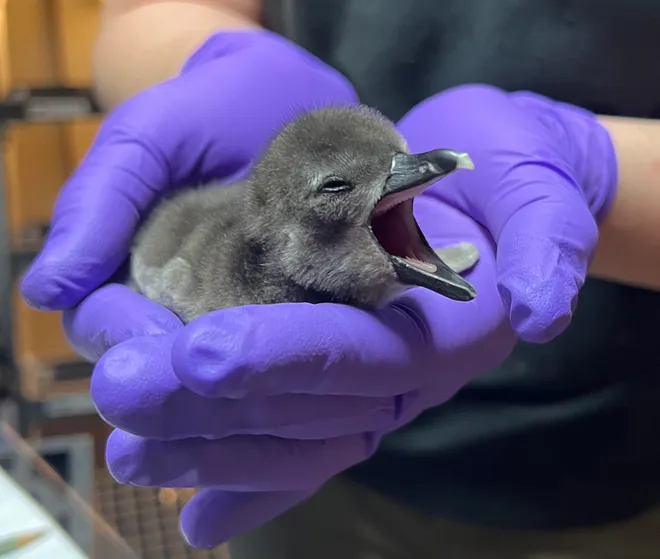Baby boom of African penguin chicks hatch at California science museum
Ten African penguin chicks have hatched in just over a year at a San Francisco science museum as scientists strive to save the endangered bird.
The bird is native to the South African coast and up west to Namibia, a region that Holly Rosenblum, senior biologist at the California Academy of Sciences, said was reminiscent of the California coast and its diverse kelp forests. Only 9,000 breeding pairs remain in the wild, a sharp decline from an estimated one million pairs a century ago, Rosenblum told USA TODAY.
Before the recent baby boom started in November 2022, the California Academy of Sciences, a nonprofit science museum and research institute in San Francisco, said it went four years without any new chicks. Sparks Perkins, a biologist at the academy's Steinhart Aquarium, said the last ten chicks hatched over a span of ten years.
The youngest chick hatched on Jan. 12, and its sex has not yet been determined. African penguins can live to be 27 years old in the wild, and longer in captivity.

'Every chick we welcome strengthens the genetics'
Threats such as overfishing, habitat degradation, and oil spills have reduced colonies of the charismatic black-and-white birds, said Brenda Melton, director of animal care and well-being at the museum's Steinhart Aquarium.
"Every chick we welcome strengthens the genetics and overall population of the species in human care," she said.
In the wild, African penguins make nests by burrowing and lining their nest with leaves, sticks and rocks. In the California Academy, each penguin pair is given a nest box, which they can line with nesting material.
Chicks spend the first three weeks in a nest box with their parents, then move to "fish school," where they learn to swim and eat fish provided by biologists, the academy said. Biologists also set up activities to keep the baby penguins engaged such as painting, bubbles, laser pointers and ice cakes.
After about three months, the academy said penguins are introduced to the colony, currently of 21 birds, where they can spend four months up to several years.
Over 1,300 endangered or threatened species in the U.S.
More than 44,000 species are threatened with extinction, according to the International Union for Conservation of Nature. In the United States, over 1,300 species are listed as either endangered or threatened under the Endangered Species Act, according to the Environmental Protection Agency.
Rosenblum warned of extinct species’ ripple effect, noting losing even one species can be devastating to an environment.
“When we mess with those webs, the whole thing can eventually topple,” she said.

Contributing: The Associated Press
Disclaimer: The copyright of this article belongs to the original author. Reposting this article is solely for the purpose of information dissemination and does not constitute any investment advice. If there is any infringement, please contact us immediately. We will make corrections or deletions as necessary. Thank you.





